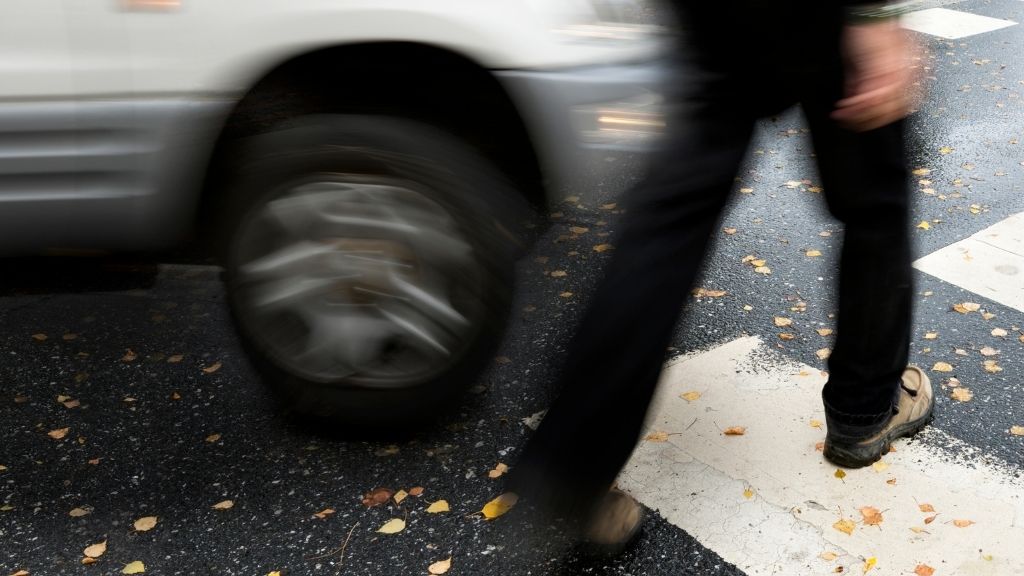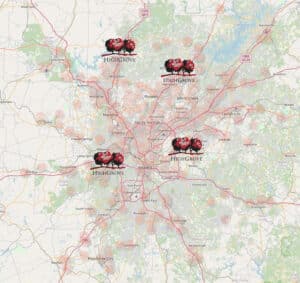Managing a large commercial property is not for the faint of heart. When projects and tenant demands pull you  in a million different directions, that overgrown shrub at the end of a parking lot aisle or the sunken slab of concrete on the walkway leading up to your lobby entrance might not get your immediate attention. But they should.
in a million different directions, that overgrown shrub at the end of a parking lot aisle or the sunken slab of concrete on the walkway leading up to your lobby entrance might not get your immediate attention. But they should.
Every property has proven to have pedestrian safety issues related to new or old construction deficiencies. Likewise, HighGrove’s commercial landscaping services team has seen safety issues run the gamut on most commercial properties, from poor material selection and improper soil compaction to invasive plant species and pedestrian shortcuts.
For tenants, visitors, and even everyday passers-by, is your commercial property as safe as it can be for them? Property managers, take a second to think about your commercial site and any red flags it presents. Now try and imagine any potential problems right at the surface – and under it – that you might not be able to see or even know where to look. Liability can be an expensive word. So, let’s discuss your liability responsibilities?
Commercial Property Safety Issues Concerning Original Construction And Landscape Material
Like most things, commercial property safety issues are generally easier to resolve the sooner they are identified. But, first, you need to know where to look — or call the right commercial landscape service to help you look.
Here are a few places to start:
Poor Soil Compaction
In some cases, there are areas of the property that have not been appropriately prepared for the final look. Due to the lack of support, poorly compacted soil is one such problem. Poor soil compaction can negatively affect paved surfaces, retaining walls, or landscaped beds and cause you or your tenants to be at risk — without even knowing it.
A professional and complete site assessment can identify most soil density issues and also provide practical solutions for this problem.
Cutting (Construction) Cornyou’veybe you’ve heard the” phrase: “This must have been a Friday afternoon job.” But, of course, in all construction projects, there are deadlines. And sometimes, these time restraints result in a project wrapped up haphazardly, but safety problems arising from this might not be evident to the naked eye.
For instance, we’ve seen handrails installed on walls with the wrong stabilizing material on some sights. As a result, using the handrail over time can loosen it, leaving people at risk of losing their balance and falling.
Underground Trash Holes
Yes, this is a real thing!
Although authorities do their best to monitor the progress of construction projects, it is not always brought to their attention when crews bury construction trash underground. Over time, organic material such as wood or paper will decompose and cause the ground to settle.
For example, we have seen underground trash holes near the base of large retaining walls. The unsettling of the ground can compromise the structural integrity of the retaining wall — as a result, the wall itself may begin to lean or sink and become a trip hazard.
Overgrown Plants
Landscape plant material is not very big when planted during construction. As time passes, the plants grow — and maybe overgrow, causing a visibility issue at the entrance to your property and impeding the view of oncoming traffic. This puts you and your tenants at risk for accidents and other mishaps.
Again, plants installed at the original construction look great in most cases once established. However, if they are planted too close to the building, they may cause insects or other pests to enter tenant space – putting you at risk of property damage.
Pedestrian Traffic Through Landscaped Areas
The shortest distance between two points is a straiThat’sne. That’s why shortcuts are all too common at office  parks and retail settings with large parking lots. Do you have a parking island with a slope covered in pine straw or loose bark? This puts you and your tenants at risk of a slip and fall accident that can’t deter pedestrians from cutting through landscaped areas; adapt to their shortcuts by installing a walkway or paver path to prevent any slip and fall possibilities. If done correctly, it will improve the aesthetics of your property and reduce your risk.
parks and retail settings with large parking lots. Do you have a parking island with a slope covered in pine straw or loose bark? This puts you and your tenants at risk of a slip and fall accident that can’t deter pedestrians from cutting through landscaped areas; adapt to their shortcuts by installing a walkway or paver path to prevent any slip and fall possibilities. If done correctly, it will improve the aesthetics of your property and reduce your risk.
Looking For More Pedestrian Safety Tips? TeaHighGrove’sighGrove’s Commercial Landscaping ServiWe’reeam.
We’re inching closer to New Year’s; what’s your resolution? If it has to do with increasing pedestrian safety on your commercial property, HighGrove can help. For 25 years, HighGrove has addressed safety risks on Atlanta area commercial properties. Please consult with one of our Client Relations Managers to review your property.
From early design stages to post-development, HighGrove provides a suite of commercial landscaping services to meet property management and development needs and increase the value of your Atlanta commercial property.
Give HighGrove Partners a call at 678-298-0550, or use our simple contact form to set up a meeting with our irrigation team.
Last modified: December 2, 2021




